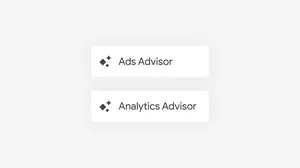The ad tech industry is crowded and competitive
“Ad tech”—the technology that powers digital advertising on publishers’ sites—is an important part of a healthy web. Google's investments in this space help publishers make money to fund their work, make it easy for businesses large and small to reach consumers, and support the creative and diverse content we all enjoy.
Some critics have claimed to Reuters that the ad tech sector suffers from a lack of competition and that Google’s efforts in this space have come at the expense of publishers. These are not new claims, but various parties are working to spur renewed interest in the topic.
To suggest that the ad tech sector is lacking competition is simply not true. To the contrary, the industry is famously crowded. There are thousands of companies, large and small, working together and in competition with each other to power digital advertising across the web, each with different specialties and technologies. We compete with lots of other companies in this space, including household names such as Adobe, Amazon, AT&T, Comcast, Facebook, Oracle, and Verizon. In just the last few years, many of these companies have bought or introduced new ad tech platforms, each bringing its own unique advantage. Successful companies like Telaria, Rubicon Project and The Trade Desk are less familiar to consumers but are publicly traded leaders. Other private but sizable platforms in the industry include Index Exchange, MediaMath and OpenX.
Competition is flourishing, and publishers and marketers have enormous choice. In a study this year of 155 major digital publishers, Advertiser Perceptions found that the average publisher uses six supply-side platforms (SSPs), an ad tech product that helps them sell ads on its website, and will likely use eight next year.
Advertisers likewise have lots of options. The average advertiser uses 3.7 demand-side platforms (DSPs) simultaneously; in fact, Amazon’s DSP now enjoys wider adoption than Google’s, a position they achieved in less than two years, according to third-party estimates.
In the past decade, we’ve built products that foster competition. Our tools and platforms make it easy for advertisers and publishers of all sizes to choose whom they want to work with in this open, interconnected ad system. Publishers use our technology to access demand from hundreds of partners, of which Google is just one source. Advertisers use our technology to buy ad space on more than 80 exchanges.
By anyone’s reasonable definition, this represents a healthy marketplace.
Publishers face numerous challenges, including the explosion in the number of news sources and the transition of advertising to digital delivery. To look at all the challenges the industry faces, plus the extreme level of competition, and say the problem is a lack of choice in advertising technology is to misunderstand the roots of the issue.
We understand people have questions about our business. It’s been widely reviewed by many regulators in the past, and we're happy to answer any questions about these issues.
Most importantly, we'll continue our work to contribute to the open web and the access to information that advertising supports. We know that publishers and marketers are using hundreds of other technology partners, and we'll continue to compete for business fairly alongside them.







